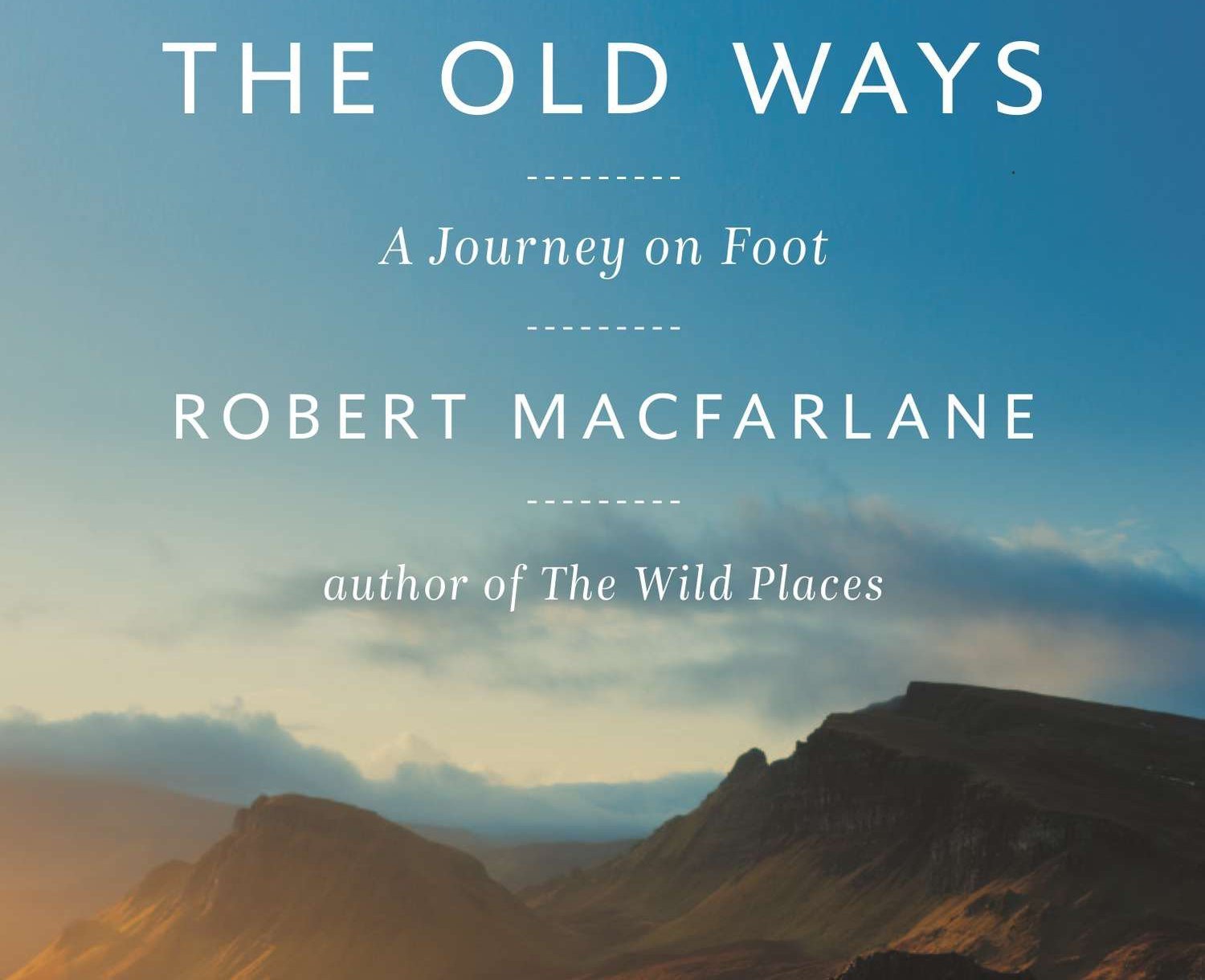“The compact between writing and walking is almost as old as literature – a walk is only a step away from a story, and every path tells.” — Robert MacFarlane, “The Old Ways”
I recently read Robert MacFarlane’s lush, poetic book “The Old Ways,” about walking miles and miles of footpaths in England, Spain, Palestine, India and Scotland (where he also takes a couple of journeys by boat as well). Even before I opened the book I had the sense that it was the land-bound version of Roger Deakin’s book, “Water Log,” about swimming in England’s wild waterways. Indeed, MacFarlane and Deakin were good friends before Deakin’s death, and indeed there are a lot of similarities.
“The Old Ways” also references (and is probably named after) an old favorite of mine, Alfred Watkins’ “The Old Straight Track,” his 1925 book about discovering alignments of sacred sites in the British landscape. Watkins was hugely influential when I was learning about these ideas in the mid- to late 1990s, and researching what would become “Sacred Sonoma.”
Both books enticed me because of my love for British landscapes. I’ve visited a few spots around Britain, and long to visit many more, but I’m unlikely to ever get to see all I want to, a list that includes the Scottish Highlands and islands (the Orkneys and Shetlands in particular), the Lake District, the Peak District, the Yorkshire moors and Pennines, so many more. I love the British landscape for a few reasons: It’s beautiful, and when I’m there I feel like I am home. Either that’s because so much of it reminds me of the Sonoma County landscapes, where I grew up, or because many of my ancestors lived in these landscapes, and something of the familiar has trickled down to me.
But I am also disabled; my body tires easily and hurts all the time. It’s worse with more than a little exertion. I can’t walk more than a mile or so without pain. Travel and jet lag alone make my pain and fatigue worse, at least until I settle into a new location and time zone. If I had months or years to spend abroad (thar lear (pronounced “har lar”) in Irish; literally, “over seas”), maybe I could accomplish it, but I don’t foresee having that luxury.
And so I read books like MacFarlane’s and Deakin’s, rich with language and description, quiet moments and insights, the poetics of nature and the exhaustion of a long journey. It’s a way to experience these places vicariously, but there’s a catch. Their perspectives and insights are almost certainly different from what mine would be. They are young, relatively able-bodied white men, able to walk long distances through these landscapes without much fear for their safety. I am not. Reading these books makes me want to take these journeys (some of them, anyway) for myself. It’s frustrating.
What’s more frustrating is that MacFarlane makes the argument – as many philosophers have in the past – that humans are meant to walk, that we are at our most intelligent, that we are able to do our freest and most creative thinking, when we journey on foot. “‘I can only meditate when I’m walking,’ wrote Jean-Jaques Rousseau in the ninth book of Confessions, ‘when I stop I cease to think; my mind only works with my legs,” Søren Kierkegaard speculated that the mind might function optimally at the pedestrian pace of three miles per hour, and in a journal describes going out for a wander and finding himself ‘so overwhelmed with ideas’ that he ‘could scarcely walk,’” MacFarlane quotes. (I quote Kirkegaard on walking in “Sacred Sonoma,” too; he’s so good.) “In all of these accounts, walking is not the action by which one arrives at knowledge; it is itself the means of knowing,” he writes.
In some sense, I think these thinkers are probably right, that the repetitive motion of one’s legs, combined with a relaxed openness to the environment, can stimulate the mind and imagination. But to insist it’s the only way for humans to reach their intellectual peak is ableist, suggesting that those who can’t walk, or walk much, are suffering mentally. As many of us know, many other repetitive and habitual tasks, such as folding laundry, knitting, hand-sewing, washing dishes or rocking in a rocking chair, can stimulate this same kind of mental state. The Nagoski sisters, in “Burnout,” call it “default mode,” a kind of resting state where our minds can relax, woolgather, daydream and make connections we can’t make when we are more focused.
Thankfully, MacFarlane continues, “It is now a familiar suggestion, and one which we are wise to be skeptical about when it is asserted as a rule. … As you will know if you’ve ever walked long distances for day after day, fatigue on the path can annihilate all but the most basic brain functions.” Walking isn’t the only way. And too much walking is exhausting for anyone, whatever their limits may be.
Still, I remain frustrated, caught between the desire to explore all of the places in MacFarlane’s book (and many more) on foot, and recognizing that my body has its limitations. Reading books like “The Old Ways” stimulates my hunger to go there, to see these landscapes in person, to feel the earth and its different “personalities” all around me. And, in small ways, it also satisfies them.
